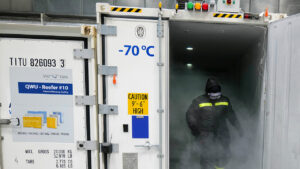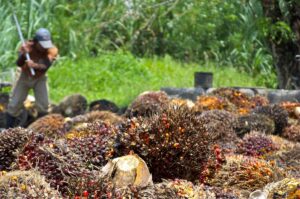Complexities of cold storage big hurdle in farm supply chain

By Beatriz Marie D. Cruz andSheldeen Joy Talavera
MOST consumers, having bought their groceries for the week, might simply stash their vegetables in the refrigerator and not give them a second thought.
Blown up to industrial scale, however, the complexities of keeping produce fresh and saleable multiply, which might help explain why farmers find it difficult to store their excess harvest. Even if enough facilities were built to service the entire harvest, the practice of storing produce is all about finding the sweet spot between building properly-sized facilities, managing the difficulty of keeping multiple types of produce fresh, and doing so at scale to justify the cost.
“A cold storage facility is a huge refrigerator. It has separate compartments used for storing food products at different temperatures depending on need,” Anthony S. Dizon, president of the Cold Chain Association of the Philippines, said in an e-mail. “Cold chain practice for vegetables needs to be planned carefully to ensure that economies of scale are adequate to justify investment in storage facilities.”
He said the facility must have separate compartments for storing vegetables whose temperature needs vary wildly. Lettuce, he said, should be kept at 0 degrees Celsius, while bell pepper is best at 7 degrees.
“In the case of onions, they need to be stored separately to avoid odor contamination of other products,” Mr. Dizon said.
Onions are the food item of the moment, having experienced price spikes in recent months. It probably didn’t help the onion market that an onion farming cooperative complained to Congress last week about having lost millions of pesos after its harvest was stored at the wrong temperature.
According to the Philippine Onion Industry Roadmap, cold storage helps “balance the peaks and troughs of onion supply,” helping farmers save their bumper crops for release when demand picks up.
In 2022, the onion industry lost about 100,000 metric tons “due to lack of facilities such as cold storage and improper handling,” according to the Department of Agriculture.
Mr. Dizon said that onions should be cleaned and pre-cooled to avoid temperature shock. “Under proper storage conditions, onions are expected to last in storage for 6-8 months,” he said.
“(Cold storage facilities) are important so onions can have a longer shelf life,” Joy E. Dela Rosa, operations manager of Bonena Multipurpose Cooperative of Bongabon, Nueva Ecija, said by telephone.
What terms exactly are farmers given when they seek out cold storage services?
According to Mr. Dizon, a farmer must agree with the cold storage operator on storage conditions, cost, and duration.
“Storage charges for vegetable products depend on the item density, which dictates the quantity that can be stored in a specific area,” he said. Cold storage operators also charge for handling and transporting the produce outside the storage facility. A handling charge may also be collected for bringing the produce in and out of storage.
The admission process for any crop involves an inspection of the produce to check for damage, pests, or moisture.
“Onions can also be stored after they have been cleaned and should not (be older than) seven days after harvest,” Eric D. Batbatan of Royale Cold Storage, which operates facilities in Rizal and Bulacan, said by telephone.
Farmers and cooperatives usually store 1,000-10,000 bags of onions with Royal between April and December. The company’s capacity for onions is about 5,000 pallet positions.
He said improperly stored onions run the risk of sprouting or freezing, becoming unmarketable. In such cases, negligence will have to be established before compensation is paid.
“If we receive (good produce) at the inbound inspection, the responsibility rests upon us. If there is any damage, we would pay our client,” Mr. Batbatan said.
Mr. Dizon said the client is expected to take out insurance while the produce is kept in storage in third-party warehouses.




